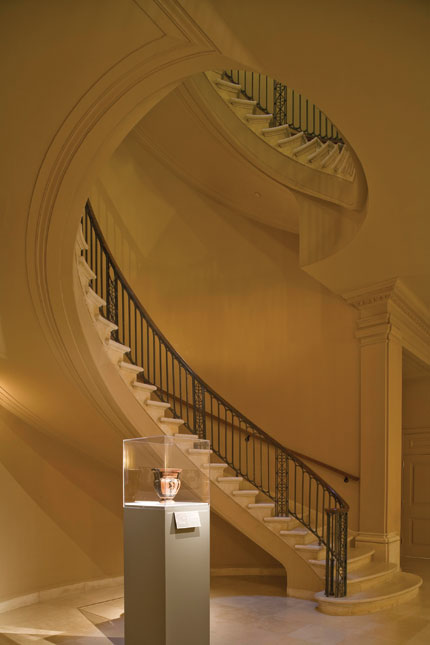ancient studies
History, Not Taught in a Nutshell
A new look at the world’s oldest cultures
by Lori Higginbotham / GSAS ’11 / with Jason Hollander / GAL ’07
In April 2007, classics professor Roger Bagnall was on an excavation at the Dakhleh Oasis in the middle of the Egyptian desert when a car emerged on the horizon, coughing up a trail of dust. In it was Shelby White, whose $200 million gift had recently helped establish NYU’s new Institute for the Study of the Ancient World, or ISAW, which focuses on the period from 3000 BCE to 800 CE. She had trekked halfway across the globe with ISAW advisory committee chair Daniel Fleming to talk to Bagnall, their newly hired director, in person. She was anxious to start molding the institute’s mission. After all, there was no time to waste if they were going to reinvent the model for studying ancient civilization.
The goal was fairly simple: White, a renowned art collector and trustee for the Leon Levy Foundation (named for her late husband), had grown frustrated with the fact that ancient studies was a field full of specialists, and not much more. Near-Eastern scholars didn’t study Greco-Roman cultures, Chinese scholars didn’t study Mesopotamia, and, as Bagnall says, “none of them thought about Central Asia.” So the team created an institute, housed in an elegant 1899 Italian Renaissance townhouse on East 84th Street, where an interest in connecting these dots is not only welcome, it’s required.
To accomplish this, ISAW pools the best experts on the planet, along with what will eventually be eight full-time faculty and a number of visiting scholars, to work directly with students. Thus, an ISAW doctoral student—the program offers only PhDs—may spark a conversation among an Arabic science expert at Columbia University, an Assyriologist at University of California, Berkley, an Egyptologist at University of Oxford, and a Persian historian at the Sorbonne. If that doesn’t yield enough food for thought, there are also some 18 affiliated specialists available right here at NYU. “I think at ISAW we are being connected more than taught,” says Mehrnoush Soroush, a first-year student focusing on water management in the Middle East. “More than ideas, we are seeing connections between places and histories of places.”
This spirit of union also drives the institute’s public programming. Last fall, an above-the-fold front-page article in The New York Times spotlighted the exhibit “The Lost World of Old Europe: The Danube Valley, 5000-3500 BC,” which featured artifacts from museums in Bulgaria, Moldova, and Romania that had never been on display in the United States. Among them was the male figure from Hamangia, Romania, widely known as The Thinker, perhaps the most famous art object from prehistoric Europe, and copper works by those considered the best metal artisans of their day. The pieces from this sophisticated yet ancient period—especially the numerous goddess figurines and decorated female images discovered in shrines—have stoked debate over the extent of women’s political power and the female-centered cults of Old Europe. The Times noted that with this show, which ran through April, a “little-known culture is being rescued from obscurity.” Amazingly, “a great many archaeologists had not heard of these Old Europe cultures,” Bagnall told the paper.
Zoë Misiewicz, a first-year studying ancient mathematics, has experienced a similar process of discovery since coming to ISAW as part of its inaugural class. Instead of conducting her research linearly, she has opted to work backward through time by learning ancient Akkadian cuneiform, and then forward, which means adding Arabic to the Greek, Latin, French, English, and German she already knows. She also stumbled upon the ancient traditions of astrology this year while taking a seminar on the exact sciences. Though initially dubious about its relevance because most now consider it a pseudoscience, Misiewicz discovered that it played a major role in Mesopotamian mathematics, and this edification has changed her perception of just what constitutes “science.”
Questions beget questions, as any good scholar knows. This is exactly what ISAW wants to instill in students—a feeling of being on a path that must inevitably morph and adjust to new insights, while fighting the popular academic urge to specialize. “Our idea is to destabilize that,” Bagnall says. “At the end they may still have an idea that’s similar to what they started out with, but it will have become a lot more complicated and interesting in the meantime.”







